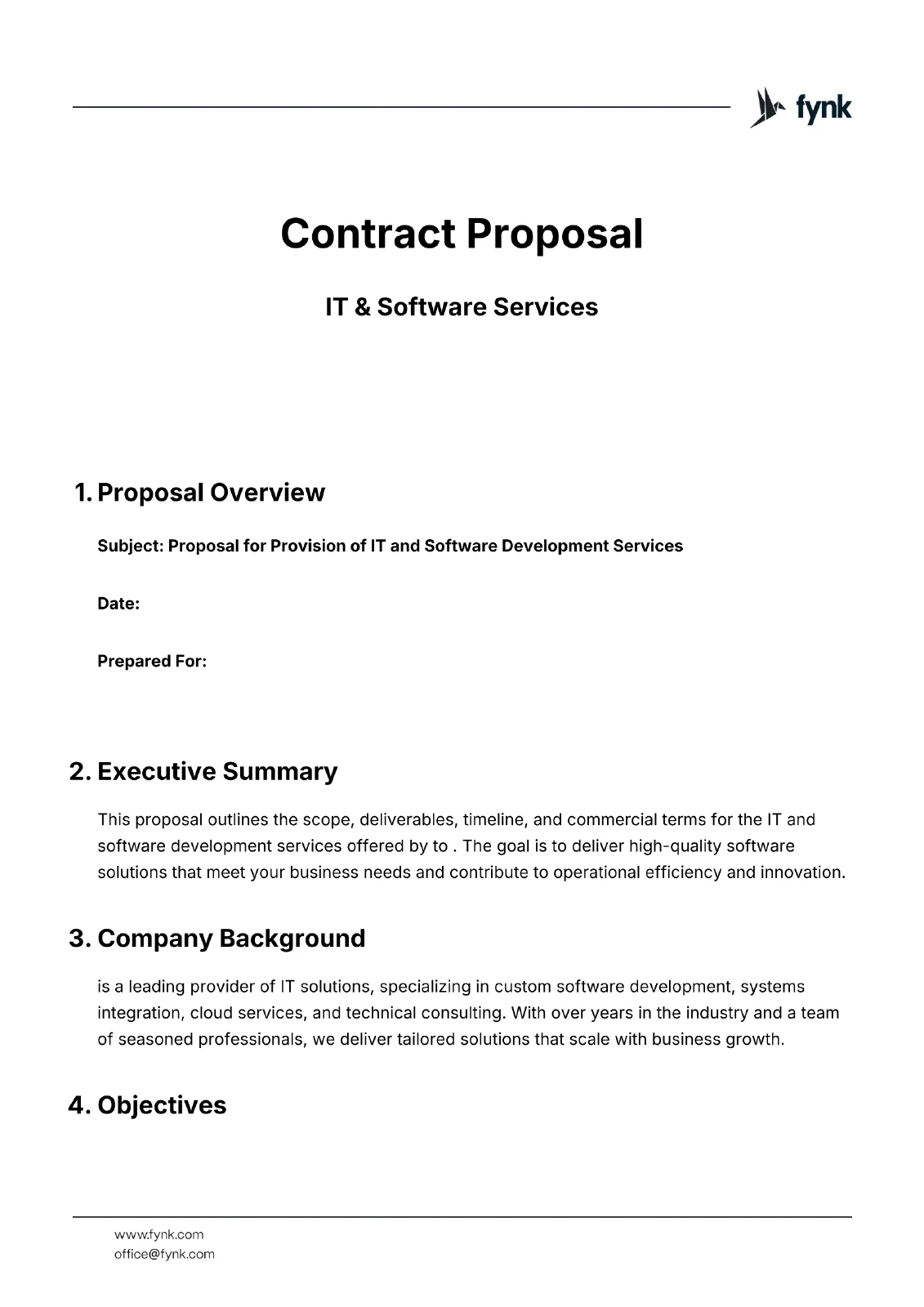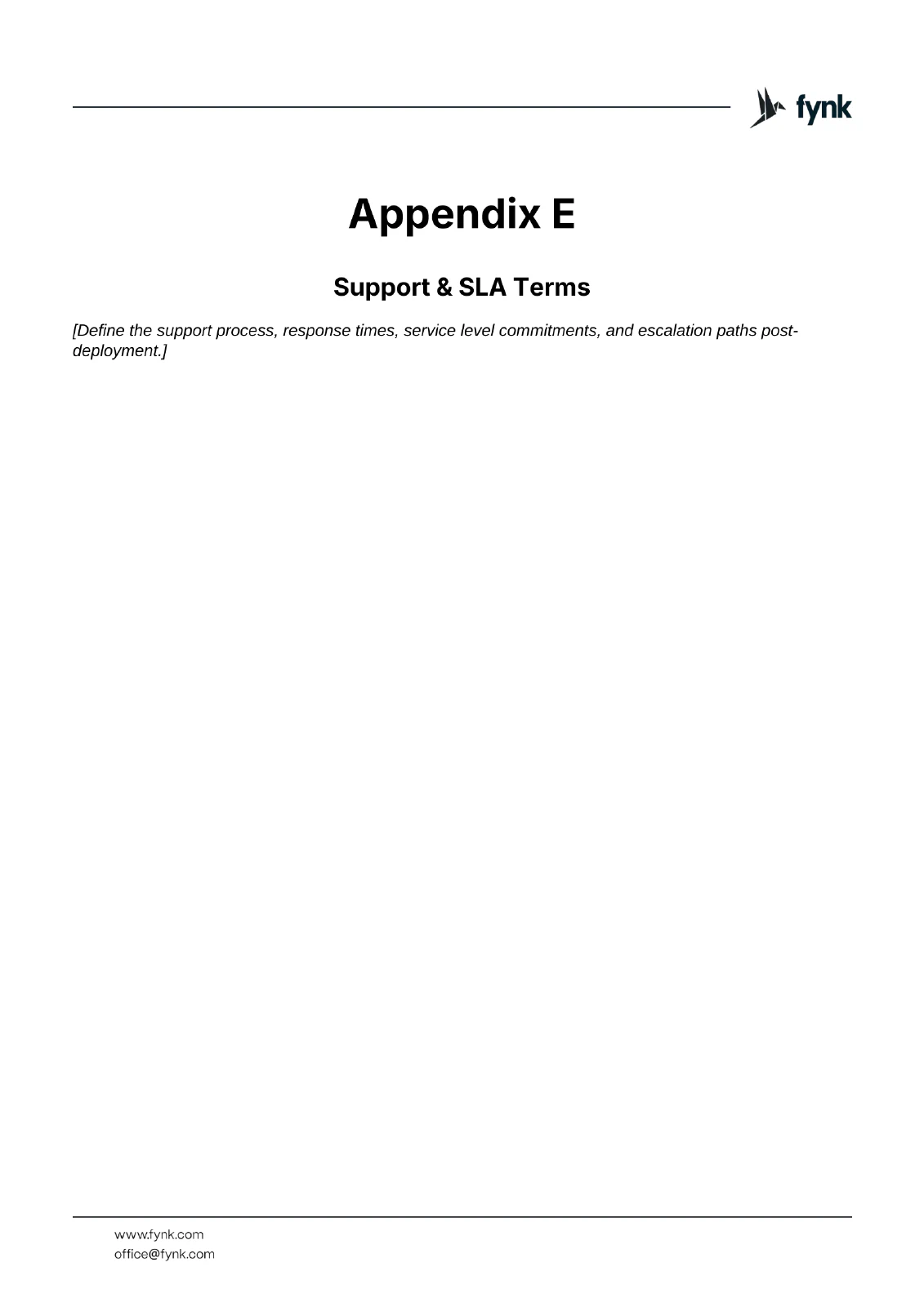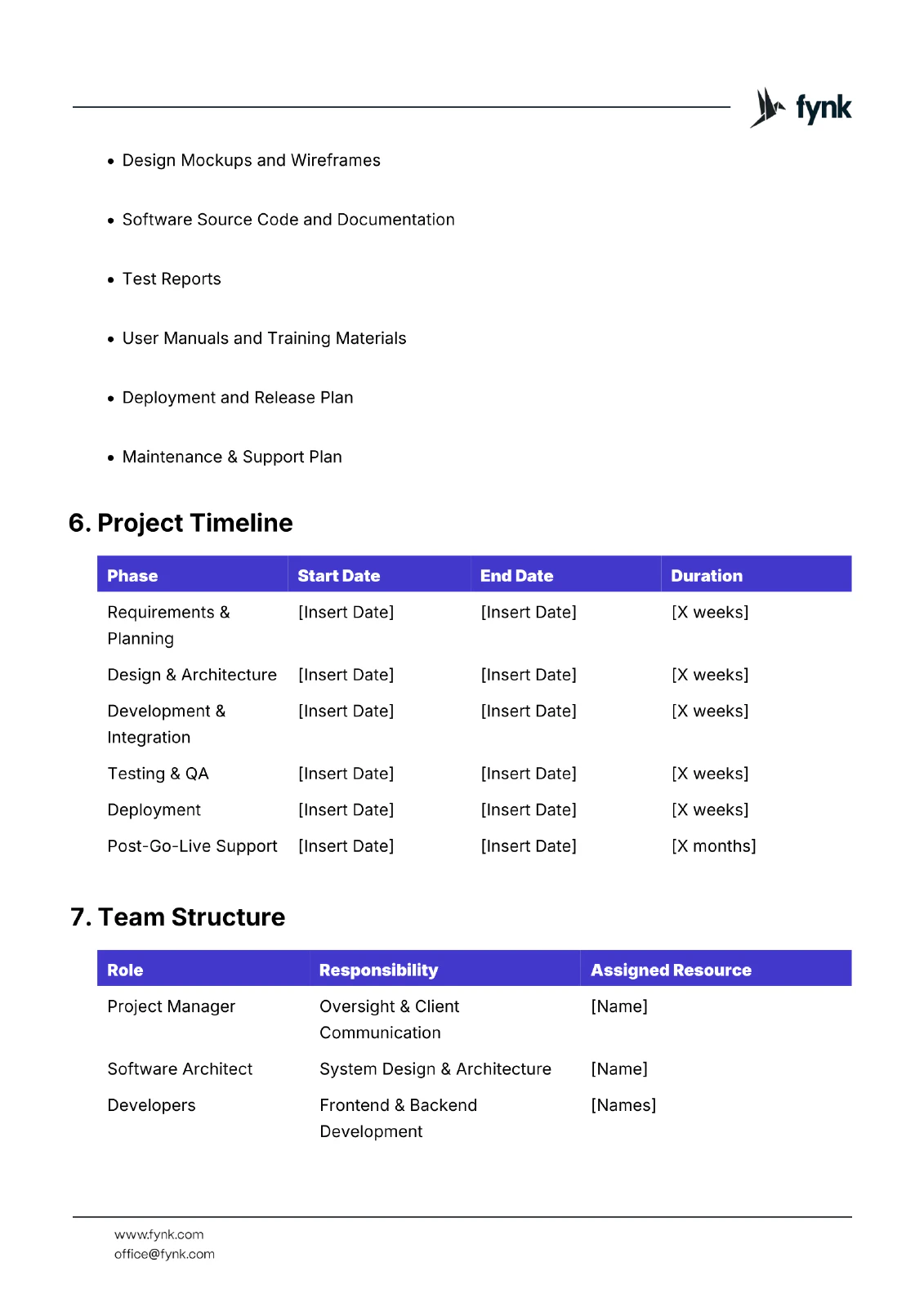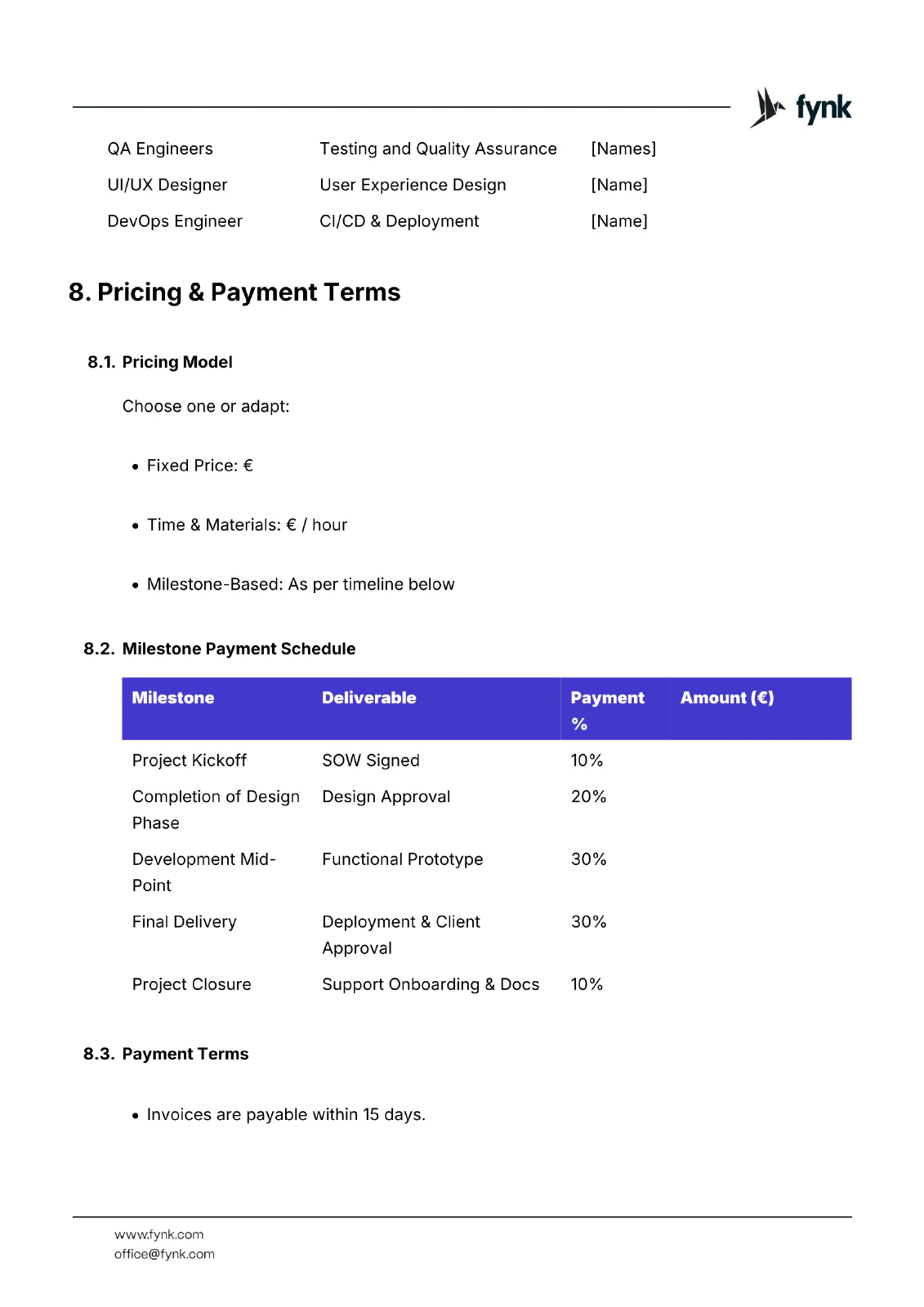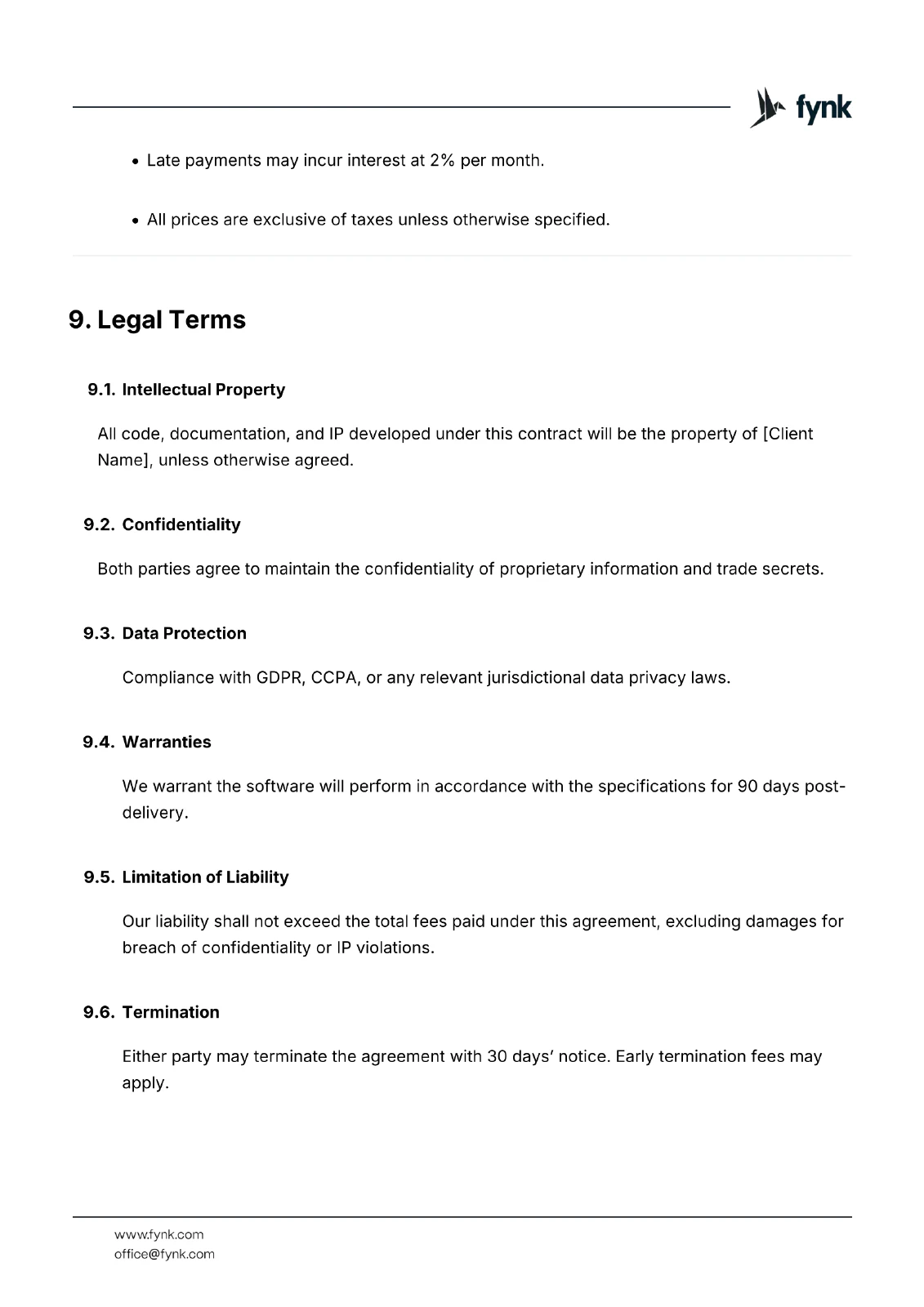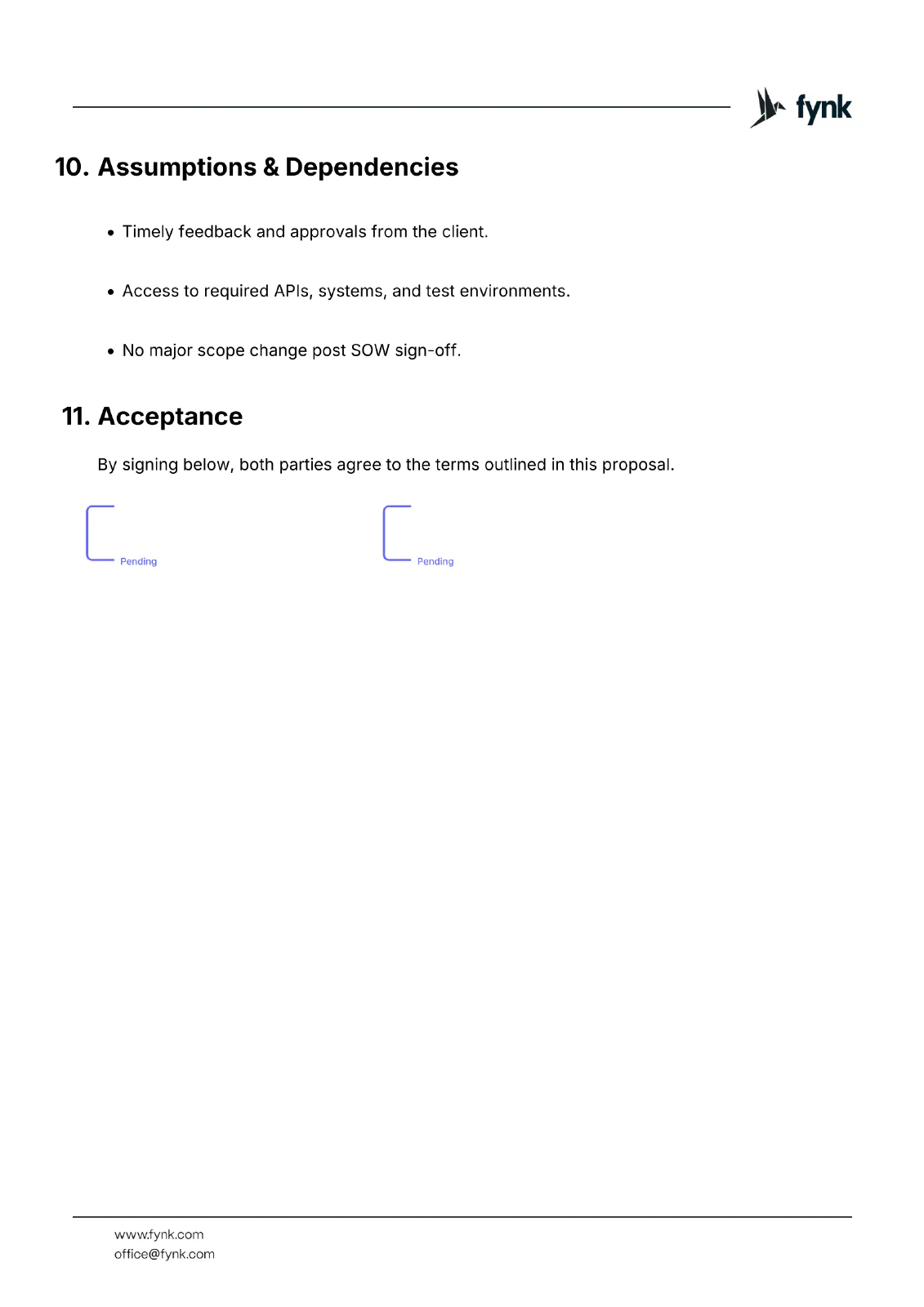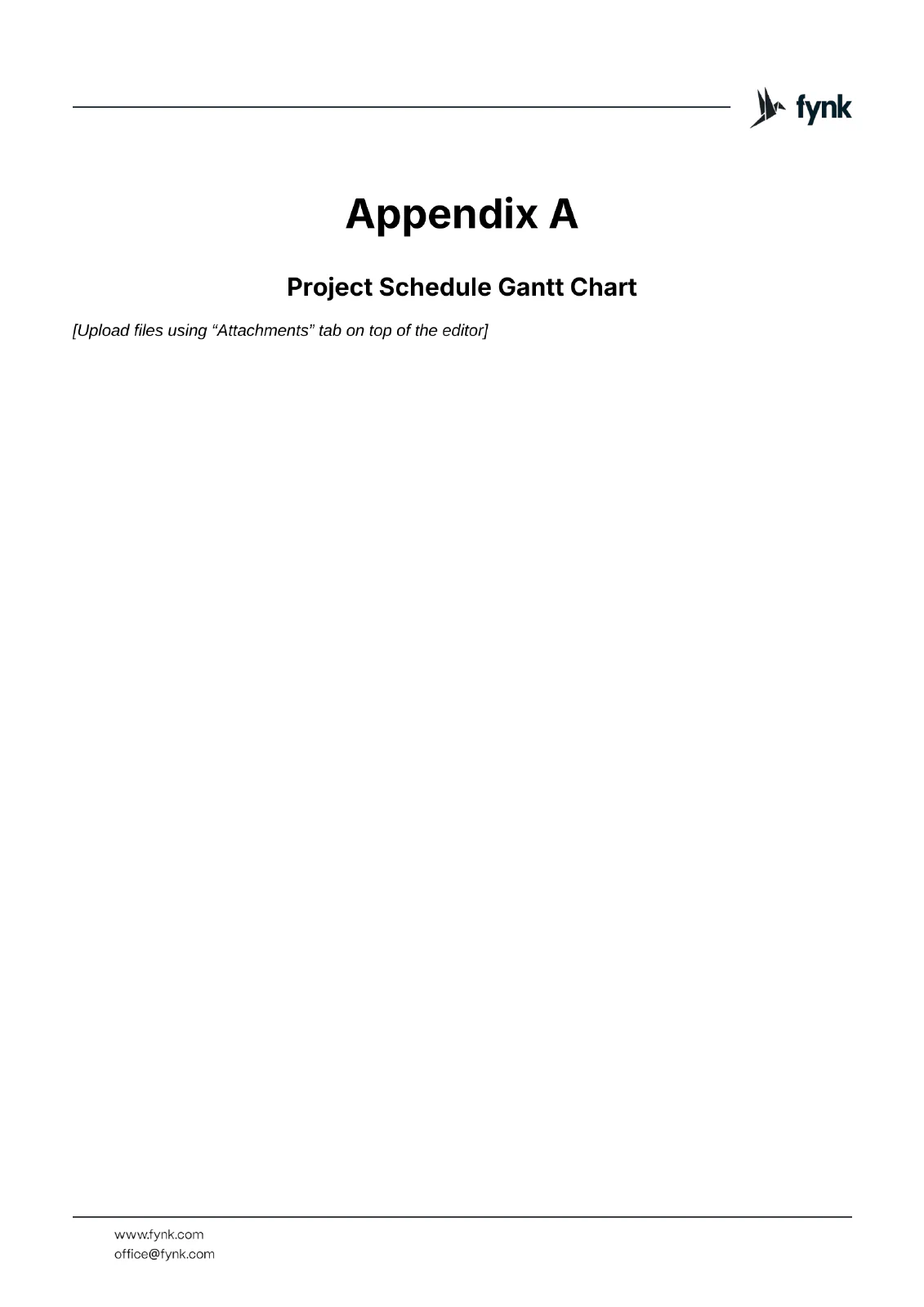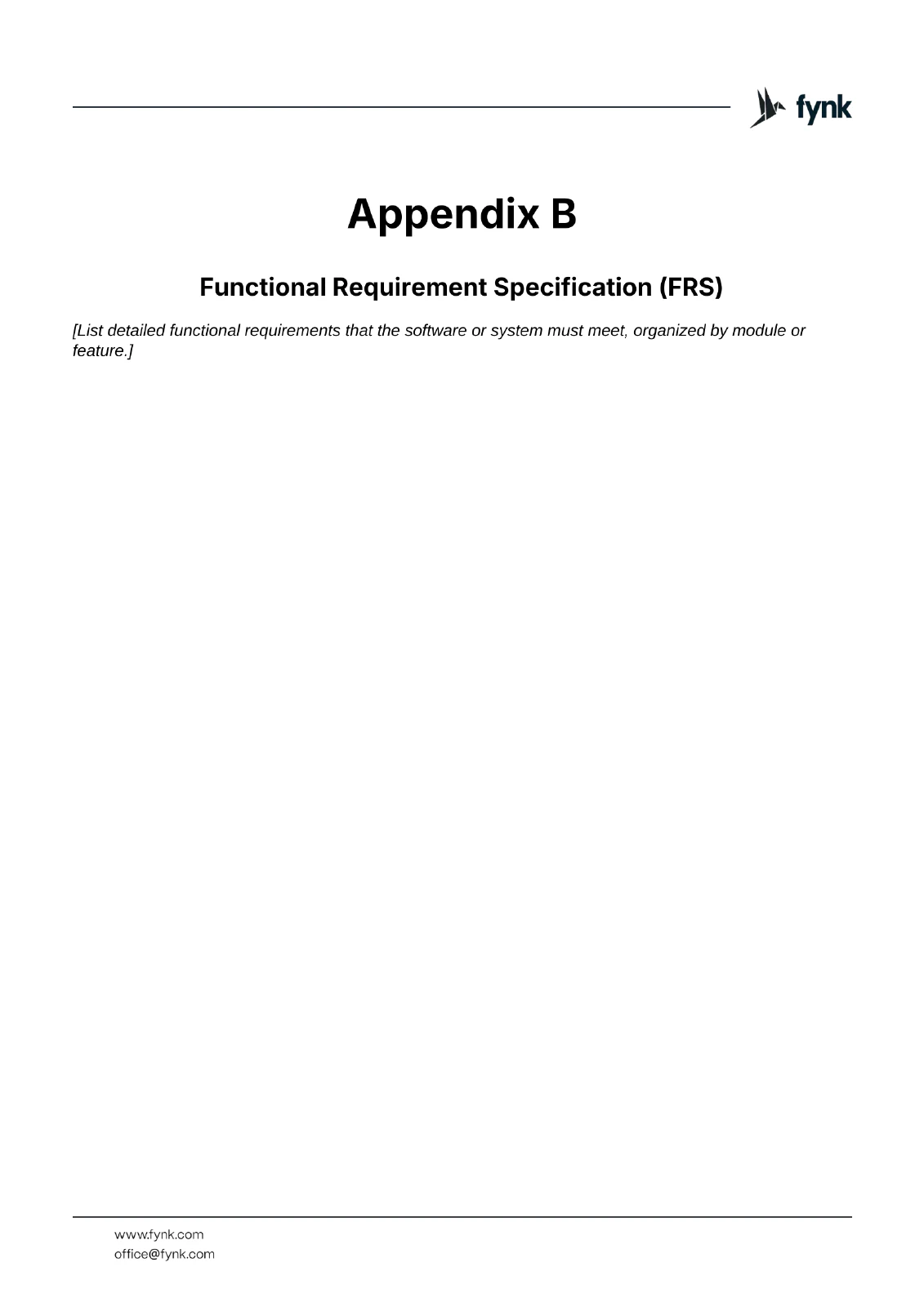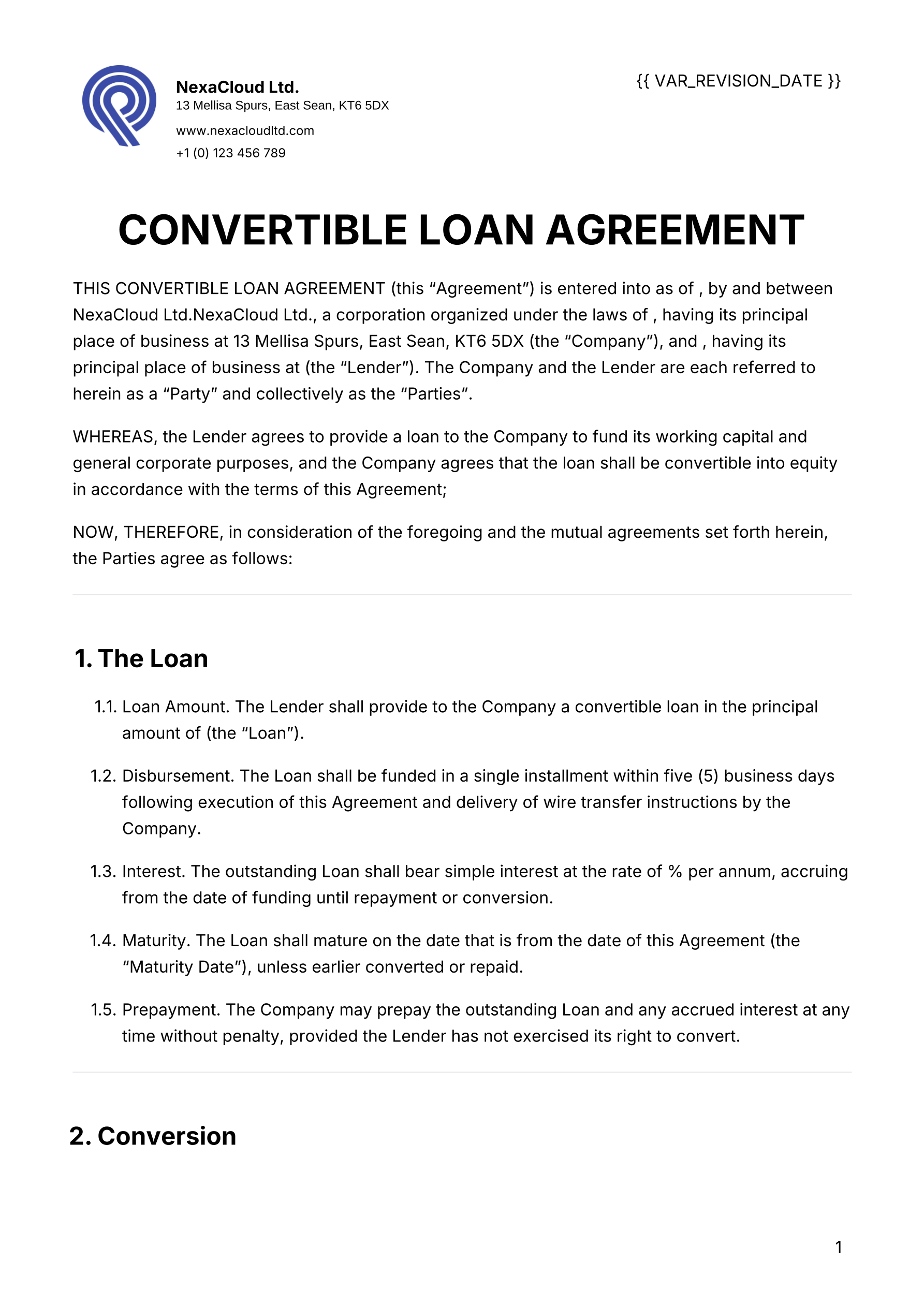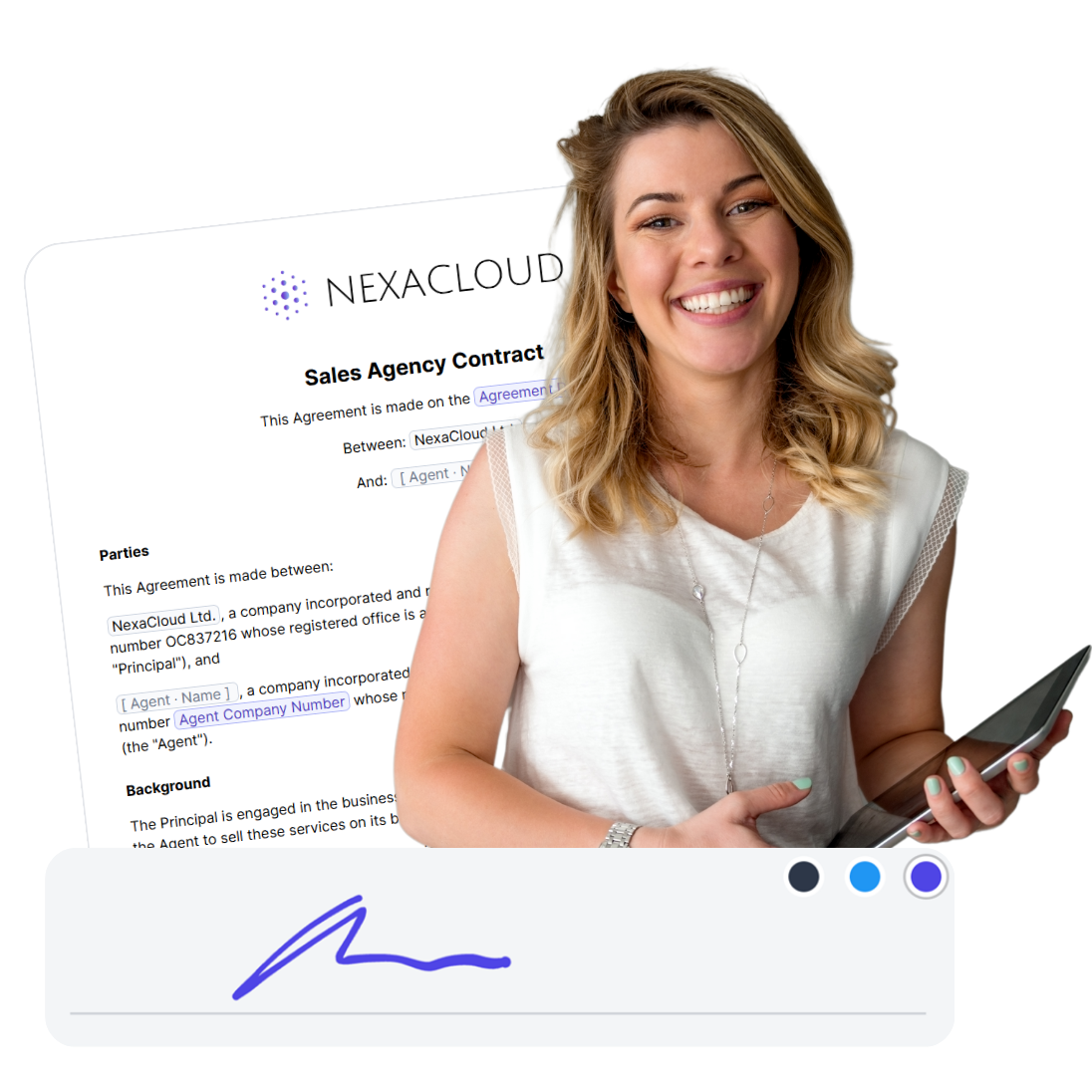Learn everything there is about Executive Contract proposal for software and IT services. What they are, when to use them for and what they should contain.
What is a Contract Proposal for Software & IT Services?
A Contract Proposal for Software & IT Services is a formal document that outlines the scope, pricing, timeline, and terms of a potential project or engagement between a service provider and a client. Unlike a typical service agreement that comes into play after a deal is sealed, a contract proposal is more of a pitch with structure—it’s designed to win work and set clear expectations from the get-go.
It walks the line between lawyer-approved clarity and sales-savvy persuasion. Basically, it helps your future client see the full picture—what they’re getting, what it’ll cost, when it’ll happen, and how you’ll make tech magic happen. It’s your chance to say, “Here’s what we bring to the table—and why it’s worth every penny.”
Whether you’re diving into SaaS development, managing IT infrastructure, beefing up cybersecurity, or wearing multiple digital hats, this proposal is a wining strategy for you. Write a great contract proposal, and you’ll cut down on endless email chains, get everyone aligned from day one, and start building trust before a single line of code hits the repo.
Key Elements of a Software & IT Services Proposal
Creating a solid IT and software services proposal is your chance to lay down the law (in a friendly, “we’ve got this” kind of way). Let’s break it down, piece by piece.
1. Executive Summary
Think of this as your red-carpet intro. The executive summary gives a bird’s-eye view of the project: what’s being done, who’s involved, and what success looks like. In one quick read, your client should walk away thinking, “Okay, this makes sense—and it sounds like exactly what we need.”
2. Scope of Services
Here’s where the rubber meets the (tech) road. This section spells out the specifics—custom app development, cloud infrastructure, cybersecurity, API wizardry—you name it. Scope of service also outlines what’s not included, which is just as important. This isn’t just about transparency; it’s your built-in insurance against scope creep.
3. Project Timeline and Milestones
Deadlines don’t have to be scary. A well-laid-out timeline gives your client the full play-by-play—from kickoff to QA and final handoff. Tack on clear milestones, and now you’ve got progress checkpoints that keep everyone honest and everything on track.
4. Pricing and Payment Terms
Let’s talk money—clearly and confidently. Whether it’s a flat fee, upfront payment, hourly billing, or milestone-based payments, the payment for service section should lay out the numbers in a way that aligns with both your cash flow and your client’s comfort zone. Bonus points for breaking it down into bite-sized chunks that show value at every step.
5. Terms and Conditions
Ah, the fine print—less flashy, but make no mistake, it’s the backbone of your proposal. Cover everything from IP ownership to confidentiality and performance warranties. The terms and conditions clause the rulebook that keeps your project (and your relationship) running smoothly, even if things get a little bumpy.
6. Deliverables and Acceptance Criteria
No surprises, no confusion. This section lists every item the client will receive—source code, training docs, UI mockups, the works. Then it adds acceptance criteria, so everyone agrees on what “done” actually looks like. Less room for misinterpretation, more room for happy clients.
7. Confidentiality and Data Protection
This one’s a biggie in the IT world. Reassure your clients that their data is safe with you. Whether it’s GDPR, CCPA, or some other acronym soup, show them you’re serious about compliance and security. Trust starts here—and builds fast when handled right.
8. Termination Clauses
A termination clause sets the exit ground rules: how much notice is needed, who owes what, and what happens to work in progress. It’s not the most exciting part of the proposal, but it’s the one that saves a ton of headaches down the road.
Tailoring the Template to Your Business
Whether you’re a solo code-slinger or running a fully staffed dev agency, your contract proposal needs to feel custom-fit, not off-the-rack. The goal? Show clients that you get them—and that you’re ready to deliver exactly what they need, how they need it.
For Freelancers vs. Agencies
Freelancers:
If your flying solo, your proposal should spotlight you—your skills, your smarts, your hands-on approach.
- 🗣️ Tone: Keep it warm and personal, but still polished. You’re not a corporation—you’re the one they’ll be working with.
- 🧍♂️ Team Structure: Feel free to strip this out or keep it simple. No need to invent a team you don’t have.
- 💳 Payment Terms: Stick to clear, straightforward setups—hourly rates or milestone payments tend to work best.
- 🛠️ Maintenance: Offering support after launch? Spell out exactly what’s included (and what’s gonna cost extra).
Agencies
Got a squad? Clients love knowing there’s depth and backup behind the scenes.
- 👥 Team Structure: Introduce key roles—project manager, lead dev, QA. It shows strength and coverage.
- 🗓️ Timeline & QA: More moving parts means more room for details. Lay out timelines and quality assurance processes.
- ➕ Optional Add-ons: Mention extras like DevOps, cloud migration, or AI integration to sweeten the deal.
- 🔁 Collaborative Deliverables: Think design sprints, iteration reviews, and feedback loops—then put those in writing.
Customizing for Different Service Types
SaaS Development
SaaS projects are marathons, not sprints—your proposal should reflect the long game.
- Talk up agile cycles, versioning, and your plan for scalability.
- Get specific on backend tech, cloud setup, and multi-user architecture.
- Post-launch support? Absolutely. Outline your SLAs and customer success approach.
App Development (Mobile/Web/Desktop)
It’s all about sleek design and seamless performance—make sure that shines through.
- Emphasize UI/UX, speed, and cross-platform consistency.
- Define your development phases: MVP, beta, full release.
- Deliverables should include wireframes, clickable prototypes, and usability testing summaries.
IT Support or Managed Services
Here, dependability is king. Clients want to know you’ll pick up the phone when things go sideways.
- Highlight response time guarantees, on-call support, and coverage hours.
- Include a separate SLA appendix—clients love their metrics.
- Be ultra-clear about what’s included in “support.” Break it down line by line if needed.
When your proposal speaks directly to your business type and your client’s needs, you’re not just pitching—you’re connecting. And that’s how you win deals.
Free Contract Proposal Template
Our contract proposal template for Software & IT Services is a great choice that help you setting clear expectations, and building long-term client relationships. Designed to be practical, professional, and flexible, this template gives you a ready-made framework to present your services with confidence.
To get started, simply open the template in the fynk. Begin by replacing all placeholders with your project-specific information—client names, deliverables, pricing details, and timelines. Then, choose a pricing model that fits your workflow, whether it’s fixed-fee, hourly, or milestone-based, and adjust the payment schedule accordingly.
Clearly define the deliverables and outline the acceptance criteria to avoid any misunderstandings down the line. Then, review the legal terms, making adjustments as needed to align with your business model or regional regulations, such as GDPR. Once everything is finalized, both parties can sign the proposal directly in fynk using secure electronic signature blocks, making the entire process smooth, professional, and legally compliant.
Searching for a contract management solution?
Find out how fynk can help you close deals faster and simplify your eSigning process – request a demo to see it in action.
FAQs
- What’s the difference between a contract proposal and a project proposal?
- While both outline what you plan to do for a client, a contract proposal includes legally binding terms (like payment, IP, and liability), whereas a project proposal is often used earlier in the sales process and may be more conceptual.
- How long should a contract proposal be?
- There’s no set length, but aim for 5–15 pages. The key is clarity, not length. Cover all critical aspects (scope, terms, deliverables) without overwhelming the client with legal jargon or unnecessary filler.
- Can I reuse the same contract proposal for different clients?
- Yes—but always customize it. At a minimum, update the scope of work, pricing, client details, and timelines. A generic proposal can come off as lazy or irrelevant and may create legal risks.
- What happens if a client wants to negotiate the terms?
- Negotiation is common. Be open to it, but know your non-negotiables (e.g., IP ownership, payment terms). A contract management platform with commenting or redlining features can make this process smoother.
- Is it okay to include optional services in a proposal?
- Yes—this is a smart move. You can offer a “core package” and list add-ons (e.g., extended support, performance audits). It gives clients flexibility and can boost your deal size.
- How soon should I send a proposal after a discovery call?
- Ideally within 24–72 hours. The faster you follow up, the more momentum you retain. Using a customizable template can speed this up without sacrificing quality.
- What tools can I use to create and manage proposals more efficiently?
- Look for tools that offer template management, version control, e-signatures, and analytics. A contract lifecycle management (CLM) platform like fynk can handle all of these—and more.
- Should I include a non-disclosure agreement (NDA) with my proposal?
- If you’re sharing sensitive technical plans, yes. Many providers include an NDA appendix or attach a separate agreement to protect IP and business insights during the proposal stage.

